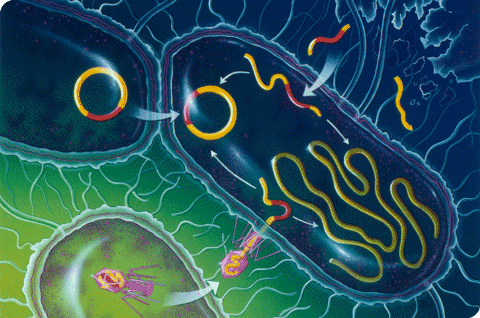
By Sri Narendra Damodardas Modi, The Hon’ble Prime Minister of India
(Text of PM’s address at the Global Call to Action Summit 2015)
Keeping aside the work that still needs to be done, there have been significant achievements on the global front in the area of maternal and child health. Looking at the big picture, we find that in 1990, India?s under-five mortality rate stood at 126 while the global average was 90. In 2013, this figure dropped to 49 against a global average of 46. Therefore, the gap to the global average reduced from 36 points in 1990, to just 3 points in 2013 reflecting that India has achieved under-five mortality rate decline at an accelerated pace compared to global rate of decline. What this translates into is this: India is likely to reach close to achieving the MDG target if the current trend of annual decline is sustained.
In addition to this remarkable achievement, another truly historic accomplishment has been the victory over Polio. India was declared as Polio-Free on 27 March 2014. From being a country which accounted for more than half of the global polio cases in 2009, to being declared free of the wild polio virus: the journey reflects India?s deep commitment to child health.
I am also happy to share with you today another major milestone achieved by India. India has eliminated maternal and neonatal tetanus. The validation for this has happened much before the global target date of December 2015. This gives us the confidence to achieve other targets well before the target date.
To sustain the efforts of being a Polio-free and maternal and neonatal tetanus free nation, and to accelerate the full immunization coverage in the country, my Government has added to the world?s largest immunization drive another mission known as ?Mission Indradhanush. It focusses on vaccinating the left-outs. It also targets to accelerate the current increase in annual rate of immunization from existing 1% to more than 5% per year. This will help us achieve more than 90% coverage by 2020, which otherwise would take more than 25 years at the current pace. The first phase has been successfully implemented. We want to ensure that no child in India dies of a vaccine-preventable disease.
India has always partnered with the global efforts on issues of child and maternal health. India is the first country to respond to the global commitment to reduce newborn mortality, subsequent to the launch of Global Every Newborn Action Plan (ENAP) at the World Health Assembly in June 2014. India launched the India Newborn Action Plan (INAP) in September 2014, targeting reduction in Neonatal Mortality Rate (NMR) and still births to single digit by 2030. India also responded by acting on the first Call to Action? through its commitment and launch of RMNCH+A.
These remarkable successes in the field of maternal and child health have been possible through our National Health Mission (NHM). The Mission, with its urban and rural health components perhaps one of the largest public health programmes in the world has resulted in improved health outcomes. 52% of India’s under-5 mortality is contributed to by deaths of newborns in the first month of life. Under the NHM, our approach emphasises a continuum of newborn care both at the community and facility level.
Our focus has been to get pregnant women to have safe delivery in our institutions. We launched an ambitious program Janani Suraksha Yojana (JSY) wherein incentives were given for delivering in public institutions to the beneficiaries directly. As a result, today, more than 75% of the deliveries take place in our institutions. This has directly contributed to reduction in maternal mortality. We are fully aware that out-of-pocket expenses remain a key barrier for women to access timely health care and services. To overcome this, we have launched a programme called Janani Shishu Suraksha Karyakram (JSSK) under which every woman delivering in a public health institution as well as the newborn is entitled to free and cashless health services, with an assured provision of free drugs, diagnostics and diet besides free to and fro transport. This has helped to further improve our institutional deliveries.
Not only are the mothers provided focused health services, but individual beneficiary tracking is being done through the countrywide Maternal and Child Health Tracking System, which ensures close tracking of inputs and outputs at the level of service provision. More than 92 million mothers and 78 million children have already been registered so far in the system.
One of our major concerns is equity. As a step towards ensuring equitable health services across regions that suffer from intra-state disparities, and to bring about sharper improvements in health outcomes, a total of 184 poorest performing districts all over the country have been identified. Special efforts are being made to put in more resources and focussed programmes in these areas.
One of the flagship programmes of my Government is the Swacch Bharat Abhiyaan (The Clean India Campaign) . As a part of this large campaign, the Health Ministry has launched the Kayakalp scheme to encourage public health facilities to maintain high standards of hygiene and sanitation, as I firmly believe that clean and hygienic environment is the stepping stone to a healthy nation. To save and educate the girl child we have launched an ambitious program Beti bachao Beti padhao. We need to ensure that the girl child survives, thrives and plays a very crucial role in society.
I have witnessed people getting poorer because of unfortunate health episodes. We need to institutionalise a system where marginalised communities receive universal health care and financial protection. We must experiment and learn from each other. India stands ready to boost its commitment and partner with other countries and move forward on our promise to end maternal and child deaths and provide a better life to the adolescent. I invite you, to commit to bold measures and hold each other accountable to these promises.







